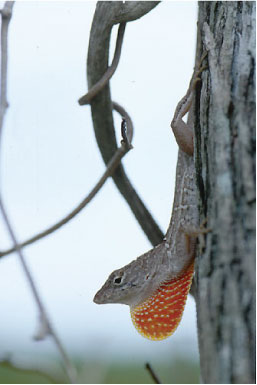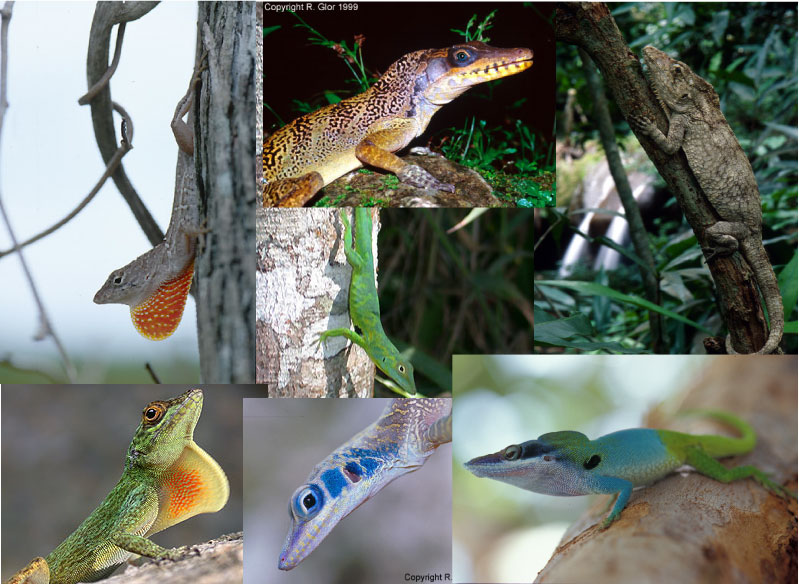| HOME | RESEARCH | PEOPLE | FIELD WORK & PHOTOS | BLOG | COURSES | LINKS |

>Research Overview
>Projects
>Lab & Field Studies
>Anolis Lizards
>Publications
>Protocols & Data
|
Anolis Lizards: Our Primary Model System |
|
With nearly 400 species, Anolis lizards represent the world's most species-rich amniote genus. This diversity is most striking on Caribbean islands, where anoles have undergone a remarkable adaptive radiation. On many islands, anoles are the most abundant and conspicious vertebrates, making them outstanding subjects for research. Research in our lab focuses primarily on the anoles of the four large Greater Antillean islands (Cuba, Jamaica, Hispaniola, and Puerto Rico). It is here that the anole radiation reaches its peak, with communities typically consisting of five or six species, and sometimes including as many as eleven ecologically and morphologically distinct forms. Because anole radiations have occurred indpendently on each island, anoles present a unique opportunity to conduct replicated tests of important evolutionary questions. One of our main goals is to take advantage of this replication via integrative, comparative analyses conducted across islands. For example, this approach has recently been used to show that speciation mechanisms and patterns of ecological specialization are often shared among independently diverging radiations. Although Greater Antillean anoles have been studied intensely for over thirty years, this work has raised more questions than it is resolved. Today, anoles are being studied by a highly interactive community of scientists who emphasize collaboration over competition. Building from decades of previous study, our lab's goal is to advance our understanding of this group through the use of recently-available molecular markers and other developing resources such as museum and GIS databases. The selection of the green anole (Anolis carolinensis) as the subject of the first reptile genome project will bring investigations of this group to an entirely new level and provide exciting opportunities for many years to come. |
 |
| Greater Antillean anoles (clockwise from top left): Anolis sagrei, one of Cuba's most common species and now a globally-distributed invasive; Anolis vermiculatus, an aquatic species from western Cuba; Anolis barbatus, a strange Cuban species with molar-like teeth that feeds on snails; Anolis allisoni, another Cuban species that may be the most beautiful of all anoles; Anolis bartschi, a spectacular rock-dweller that lacks a dewlap; Anolis distichus, a remarkably polymorphic species from Hispaniola and the Bahamas; Anolis aliniger, a montane species from Hispaniola (center). |